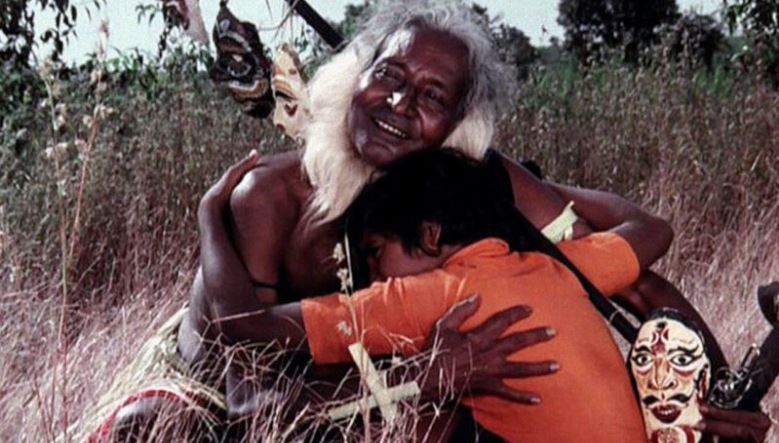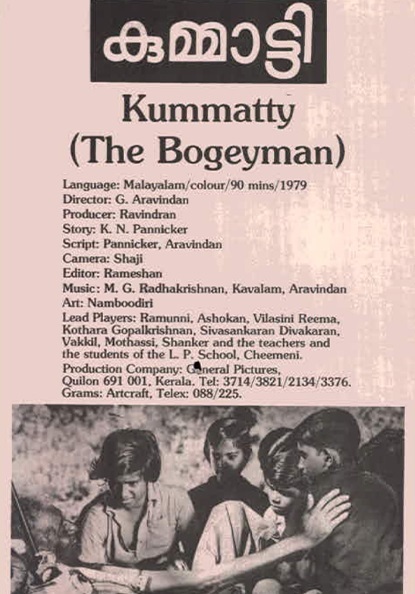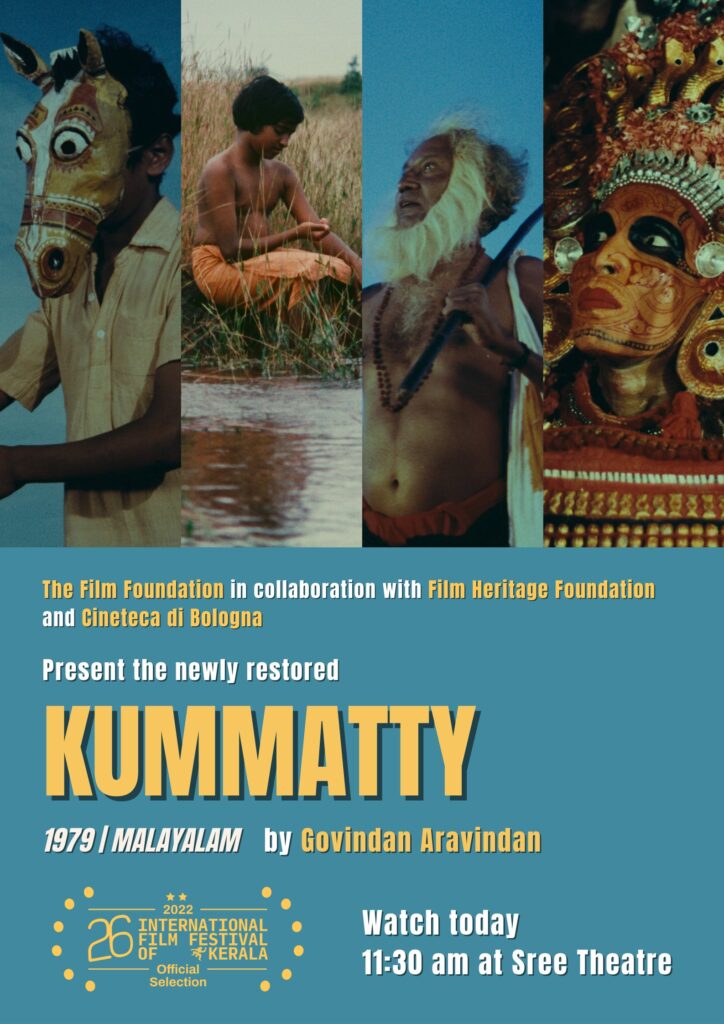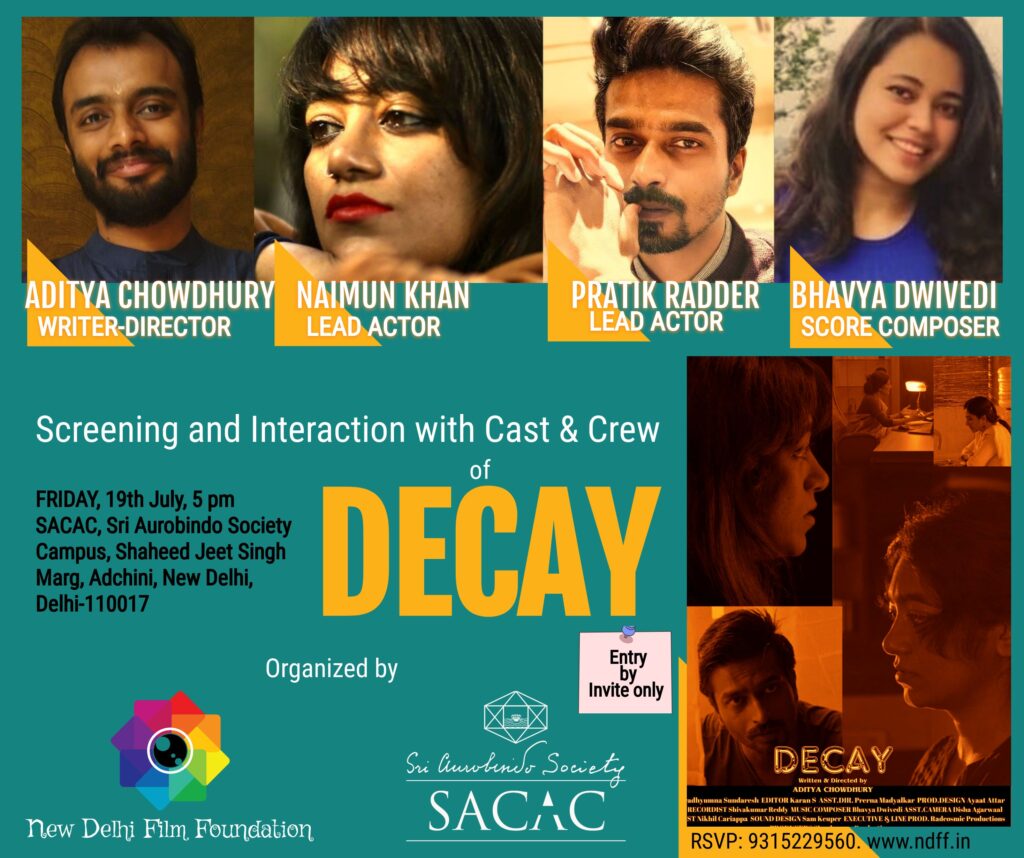G. ARAVINDAN and his classic film KUMMATTY


This is a piece originally written on the estoration of the classic film Kummatty of the great filmmaker G Aravindan. We are publishing this wonderful article of Shoma A. Chatterji as a gesture of her kind support to our campaign Cinema of India. Shoma A Chatterjee is a very senior film critic and scholar, based in Kolkata. She specializes in Indian and also Bengali cinema. Along with so may awards and felicitations she has won the National Award twice for best writing on cinema and has authored 32 published titles of which 14 are on Indian cinema. She is known for her amazing passions & love for cinema as even today at the age of 80 plus, she is one of the most active journalist-author-scholar of film fraternity in Kolkata. We are publishing this article as a tribute to G Aravindan on his 89th birth anniversary.
Having been a very low-profile person, keeping himself distanced from the media, one of the tragedies of media history is that many have forgotten G. Aravindan and his rich contribution to Indian cinema since his passing away at a relatively early age in 1991.

Govindan Aravindan was one of India’s greatest filmmakers and a leading light of the New Indian Malayalam cinema of the 1970s and ‘80s. He was a man of many talents – painter, cartoonist, musician, theatre director, and filmmaker. An autodidact, his films were marked by an entirely original approach to cinema. He has been described as a poet-philosopher with a vision, and he made mystical, transcendental films that showed deep compassion for the eccentric, the marginalized, and the alienated. In a career spanning from 1974 to 1991, he made 11 films and 10 documentaries with almost all of his films receiving national or state awards.
In the year 2021 The Film Foundation’s World Cinema Project, a program created by Martin Scorsese in 2007, Film Heritage Foundation and Cineteca di Bologna announced a collaboration to restore legendary Indian filmmaker G. Aravindan’s classic Malayalam film “Kummatty” (1979). The film was restored at the L’ImmagineRitrovata laboratory in Bologna, Italy and had its world restoration premiere at the Il Cinema Ritrovato festival on 27th July 2021.

Kummatty (Bogeyman) in Malayalam, was released on July 12, 1979 and had reached a state of almost total destruction. Fortunately, after almost 42 years it got restored to its original quality for international film buffs to be able to bring back the unforgettable creation of this great master who began as a cartoonist, graduating to a wonderful music composer, an artist with a gift for the aesthetic use of bright colors, who is not much remembered for his films including Kummatty.
The film is a Pied Piper-like figment of Malabar’s folklore about a partly mythic and partly real magician called Kummatty (bogeyman). Kummatty materialises from nature one day to mingle with and weave a spell of carefree abandon around the children of the village. Kummatty travels from place to place and entertains children with dancing, singing and performing magic..

Kummatty is a normal human being with certain gifts of the magic that forms part of his character enriched by his gift of creating a mesmerising rapport with the children of whichever village he happened to visit from time to time. The villagers were surprised while the children, initially scared of the weird visuals he presented, gradually warmed up to him and grew fond of him not knowing that his visit was temporary and he would move on, perhaps to another village to enchant the children therein.
But unlike the Pied Piper, his story has a happy ending. His entry into the village is both colourful and filled with music. He wears a bright red loin cloth below, is bare-bodied above and holds a stick across his shoulders from which hangs a series of animal and human masks. He sings a song filled with a tribute to nature, the peacocks flying in the sky, and urging everyone to listen, carefully, if one wishes to hear their ‘voices’ and sounds.

The main quality of the film lies in the way cinematographer Shaji N Karun (renowned filmmaker of ‘Piravi’ fame) captures the picturesque landscape of the place including its sunsets and sunrises and the panoramic frames of the greenery, the old and young trees, a small tank in which everyone bathes using his camera like a paintbrush drawing generously from the colourful palette of Nature.
There is very little music in the film other than the music accompanying the rituals and the movements of Kummatty and is suffused with the ambient sounds of the children running, playing hide-and-seek, the sound of the temple bells dotted with the figure of the very old woman who lives alone outside the temple and sweeps its floors.
His human-ness emerges when he sits under a tree, removes his artificial white beard and shaves himself clean before putting his gear back on. The small group of children are very scared of his presence but slowly, he beckons to them with a smile till they warm up to him and become his close friends. The use of Nature in all its splendour seeps into the lives of the children whose naivete blends into their friendship with a man who arrives one day from nowhere and disappears to come back again the following year.
The school where the children attend classes is shown thrice over the film. This makes a slyly sarcastic comment on the system of education where the same teacher teaches them about elections and the right to vote in one lesson, about elementary zoology in another lesson and in the third, asks the children to pick up their respective copies from his table. This time, the children hear the bells and the song of Kummatty and though the school hours are on, they rush out to see him.

Chindan, who leads the small group of children who get close to Kummatty, finds Kummatty running a raging fever and calls for the village doctor who comes and treats this man back to health. As if in a gesture of gratitude, Kummatty displays his magical powers to the boy by producing two dates out of thin air and Chindan merrily shares this tale with his friends of who, some believe and some do not.
One day, Kummatty goes a bit overboard and with a swing of his stick, turns the children into animals – a goat, a mare, a monkey, an elephant, a peacock and a dog. Chindan is the dog. Before Kummatty can reverse his magic and bring them back to their human form, Chindan is chased away and out of the village by a real dog. As a result, Chindan remains in his dog avatar but that is only outwardly which does not change his inner self of the human. The other children are changed back to their normal form. Chindan as the dog is rescued by a young girl from an affluent family and given shelter in their home. His desperate parents along with the villagers go through several rituals to bring him back to wherever he has disappeared to. When all rituals fail, in the dark of the night, the entire village march out with just the torches lighting up the night sky filled with desperate cries of “Chindan, Chindan” which offers a deep glimpse into the feelings of solidarity among the villagers of Malabar.
The marked sign of Chindan as the dog is that he never barks, lies down quietly in one corner and does not either mingle or fight with the pet dogs of the family. The family looks after him well and also summon a vet to find out what is wrong with him. The vet says that he is a country dog and nothing is wrong with him. Chindan returns home but all the petting and feeding and cuddling by his mother and sister have no effect on his depressive state. Then his pet parakeet begins to flutter its wings in excitement and Chindan as the dog, suddenly wakes up from his stupor to look at the parakeet as if communicating with it. But nothing more happens till, the sounds of Kummatty’s singing reaches his ears and he runs towards the music and the song and the sound of drums to reach his friend who, recognising him at once as Chindan, turns him back to the boy he was.
Chindan comes back home to set his pet parakeet free. He silently opens its cage, catches its claws and sets its free. The sky is filled with birds in flight and the entire screen is filled with these birds, almost covering the blueness of the sky behind spelling out the essence of the film – freedom. When Chindan turns into a dog, he is trapped in a body he never belonged to and feels imprisoned. This makes him understand that freedom is more important than anything else and sets his pet parakeet free.

Martin Scorsese said, “Aravindan was a visionary director and Kummatty is considered among his greatest work. The Film Foundation’s World Cinema Project will share this film with the wider audience it deserves, making it a true cinematic discovery.”
The cultural awakening of 1970s in Kerala also saw a cashew exporter and producer, Ravindranathan Nair, patronising both Aravindan and Adoor Gopalakrishnan. The most memorable and remarkable films by Aravindan and Gopalakrishnan were produced by Nair. Most of Aravindan’s films, including KachanaSita (1977), Thampu (1978), Kummatty (1979), Esthappan (1980) and the unique musical Pokkuveyil (1982),were all funded by the generous producer.
Cecilia Cenciarelli of Fondazione Cineteca di Bologna said, “Only two 35mm prints (one with photographed English subtitles) of ‘Kummatty’ survive and are the result of a not-so-distant past when film negatives were copied and then discarded, sometimes leaving behind only projection prints. The two copies were naturally worn-out, very dirty and deeply scratched, one containing a consistent vertical green line on the right-hand side of the image, which required painstaking frame-by-frame work to remove.”
“The film’s natural environment, which could be considered one of the main characters of the film, was lit by master cinematographer Shaji N. Karun and had completely lost its rich palette that illuminated the skies, grass, foliage and fields, becoming instead a homogeneous magenta. Thanks to Shivendra Singh Dungarpur, L’ImmagineRitrovata laboratory was able to be in contact with G. Aravindan’s son, Ramu Aravindan, and Shaji N. Karun who helped recapture, as much as possible, the original aesthetics as well as the magical dimensions of the film.”

picture courtesy: Film Heritage Foundation
Tadao Sato, one of Japan’s foremost film scholars and critics, described Kummatty“as a masterpiece and stated that he had not seen a more beautiful film in his whole life.”
Kummatty is about children and their naïve innocence that believes without doubt. Kummatty is about how a wandering middle-aged man who, more than creating magic, can win the hearts of little children who hardly know him. Kummatty is about a man who lives life on his own terms but holds on to his innate humane-ness. But above everything else, Kummatty is about freedom.


